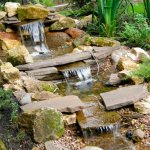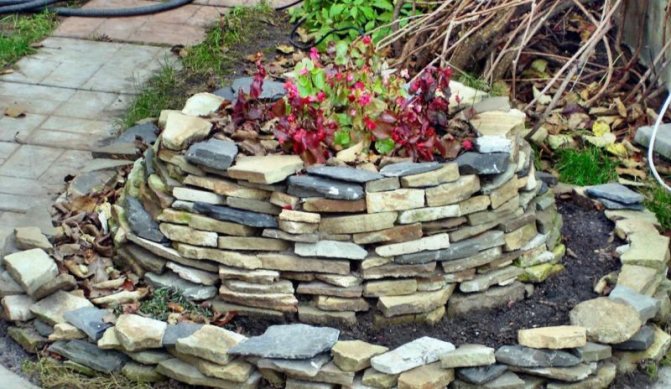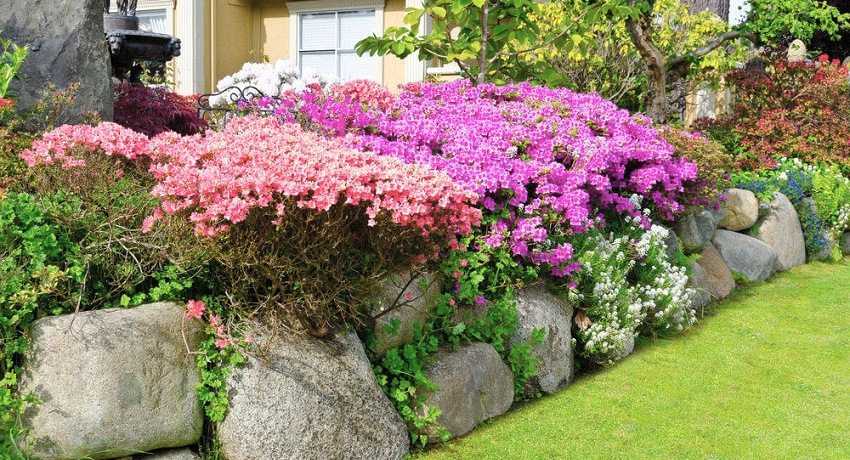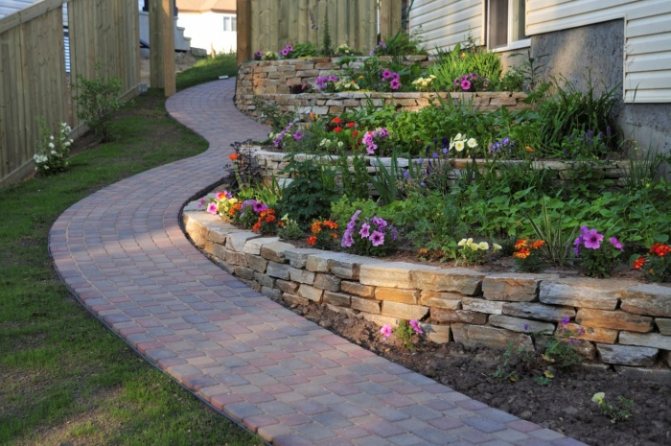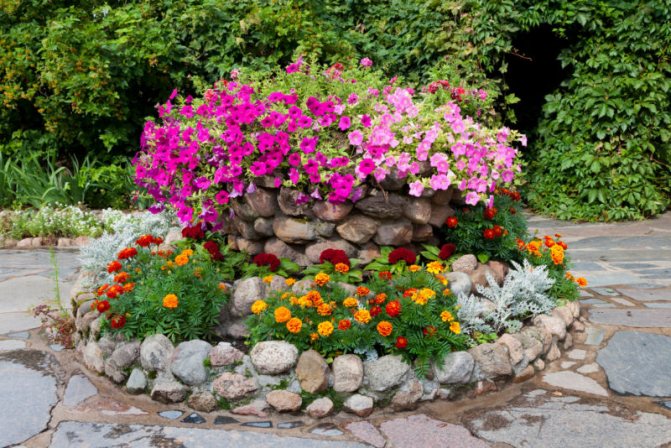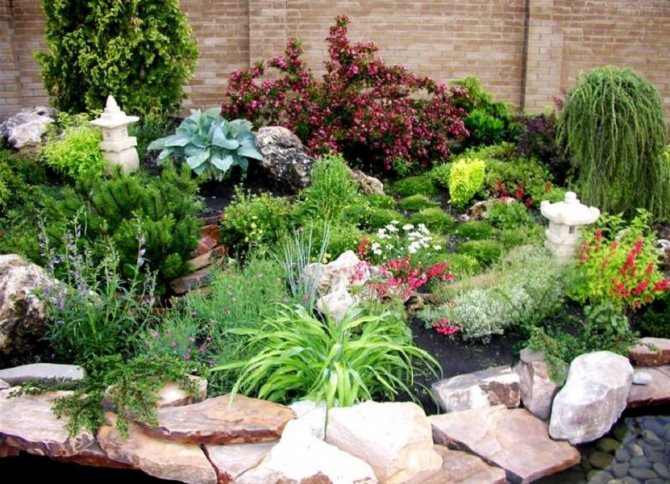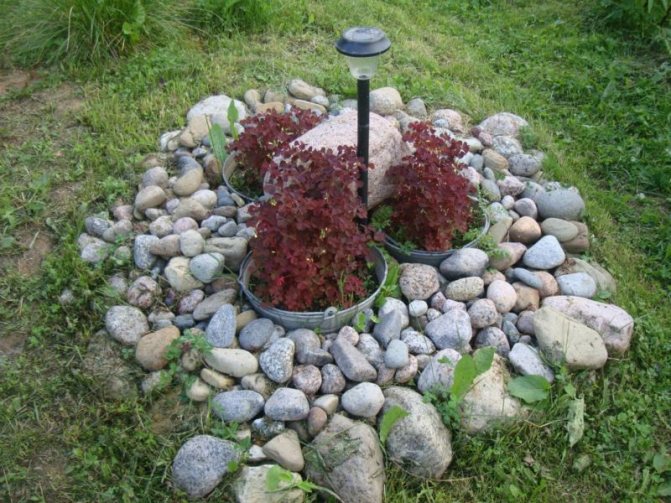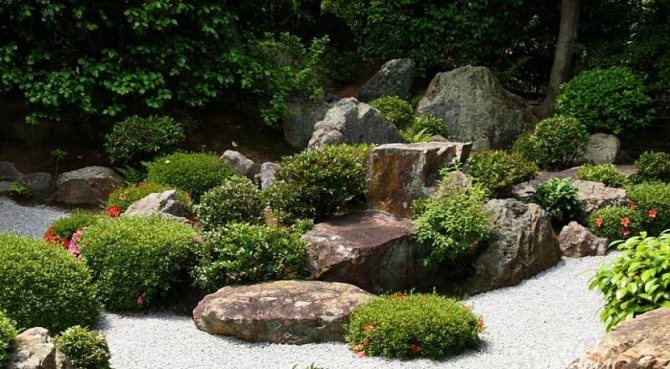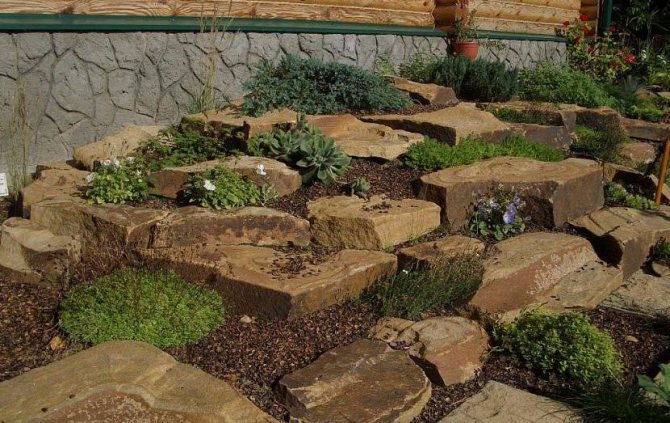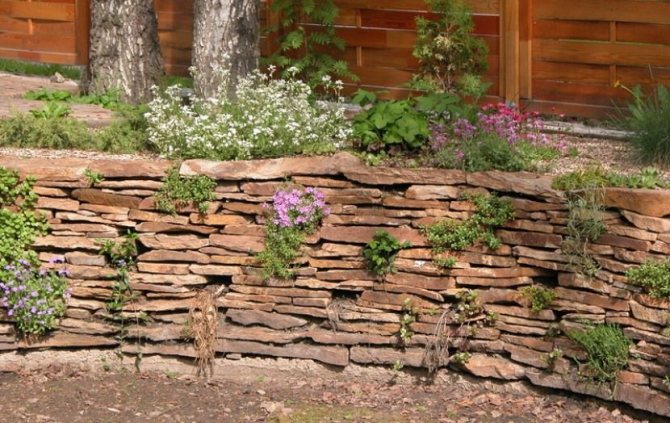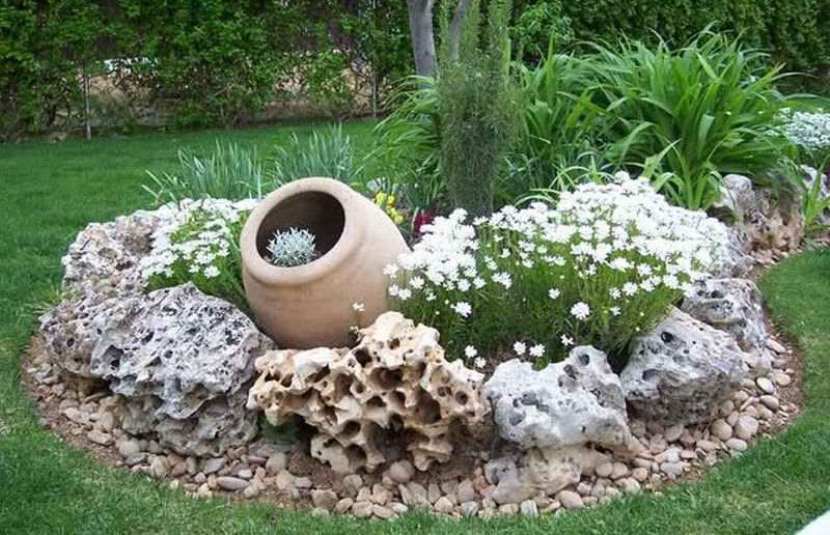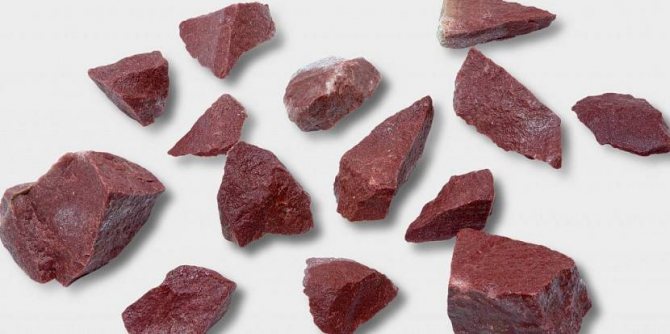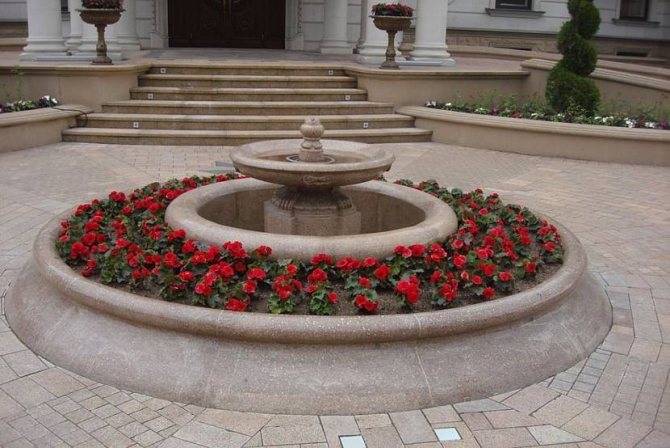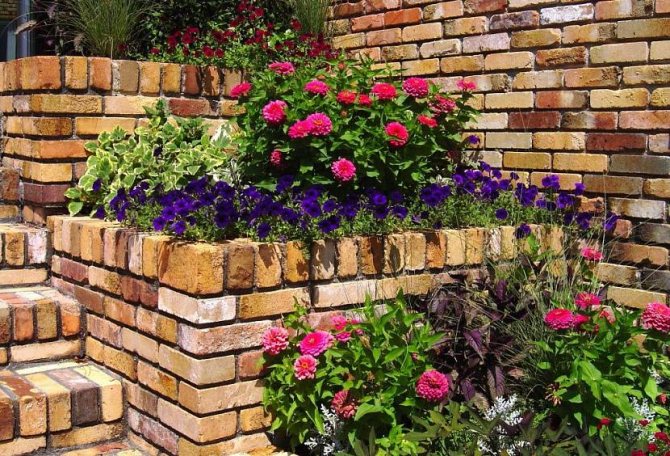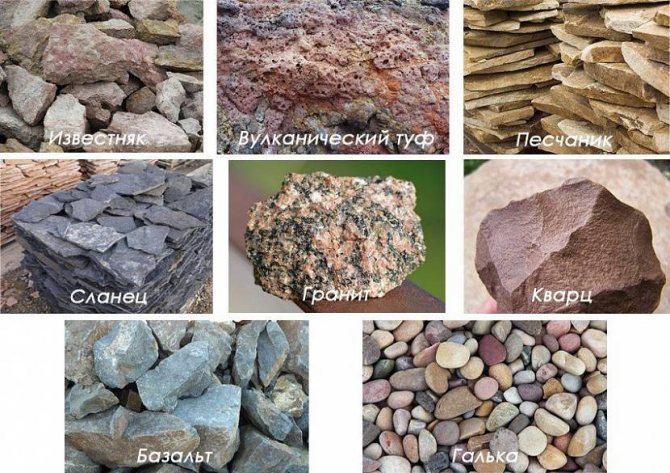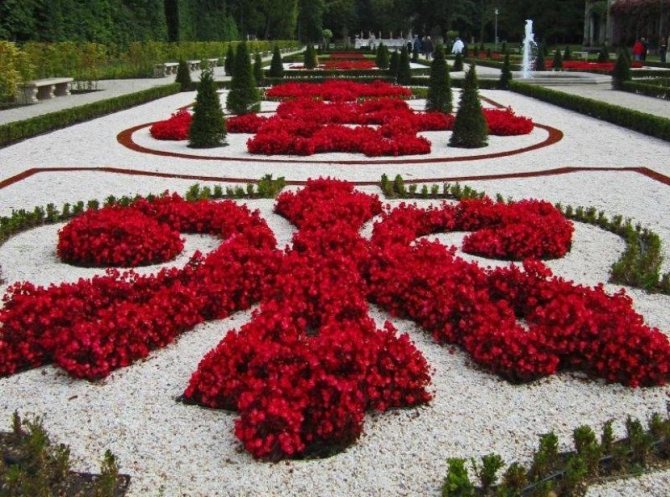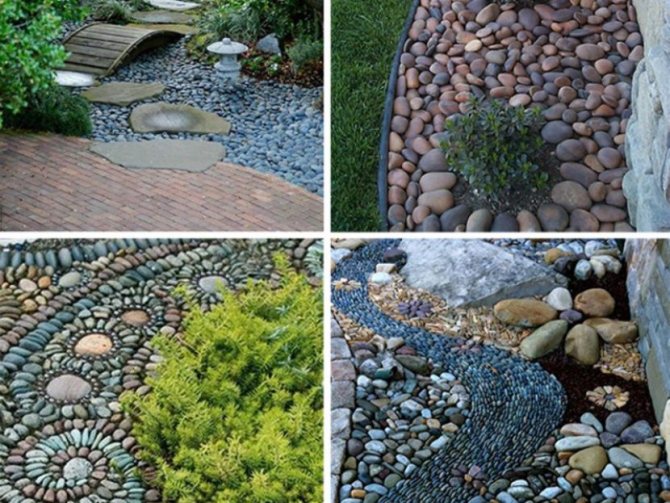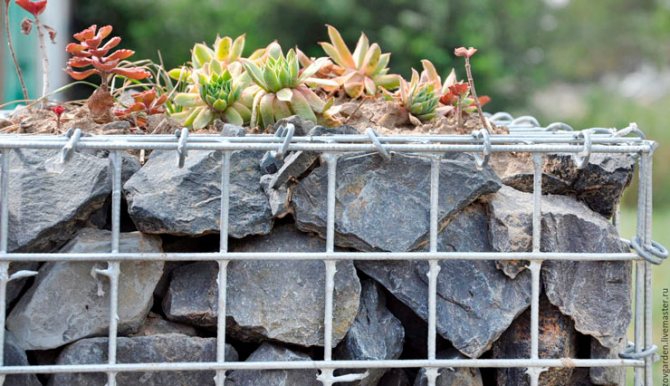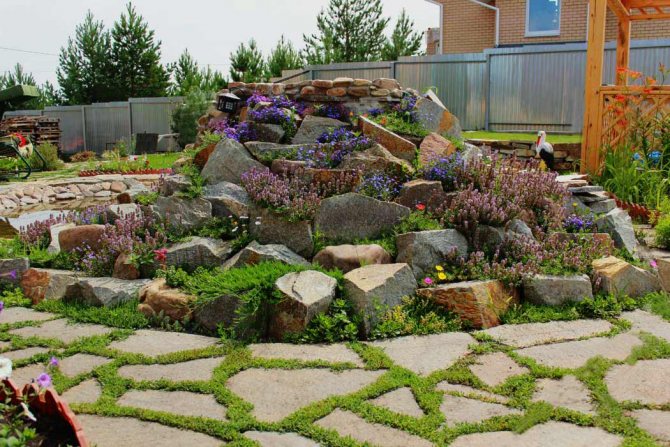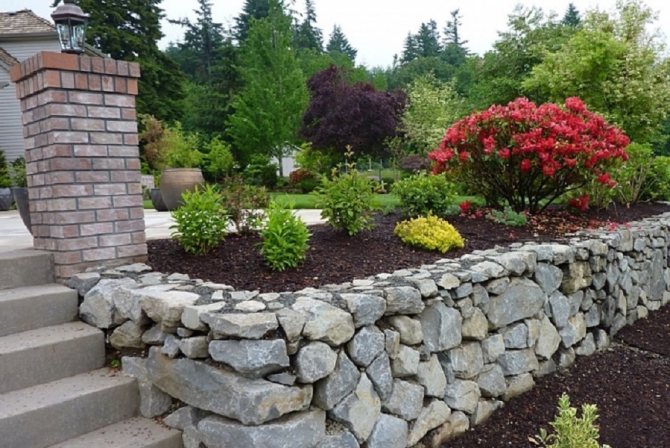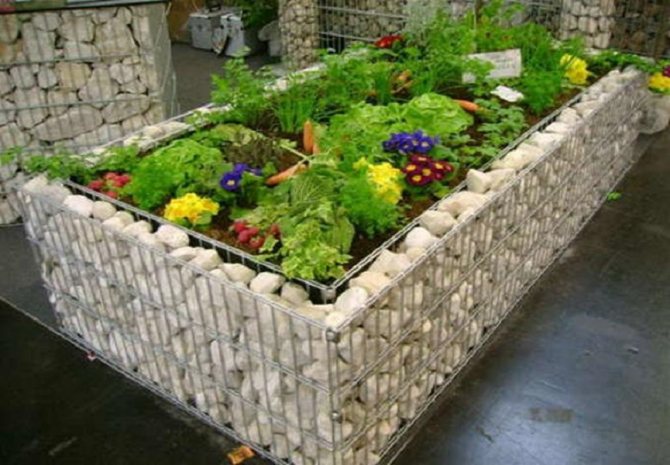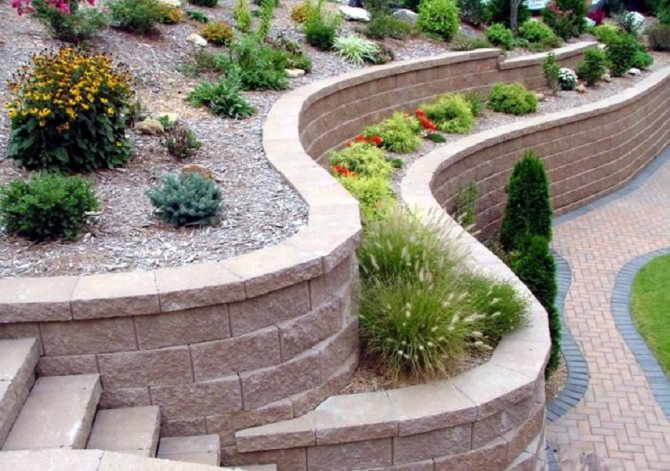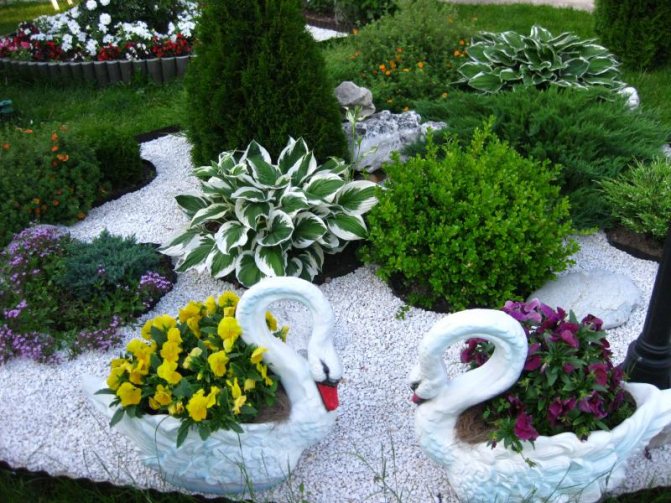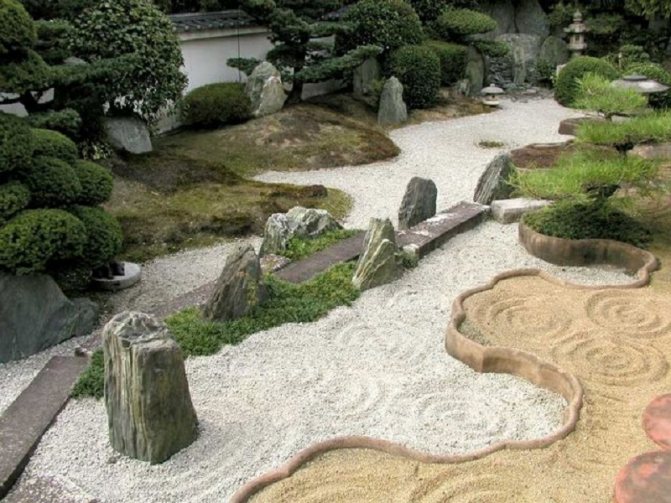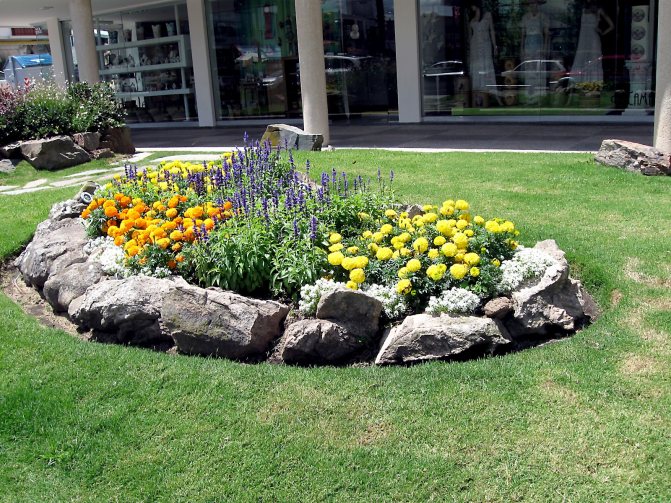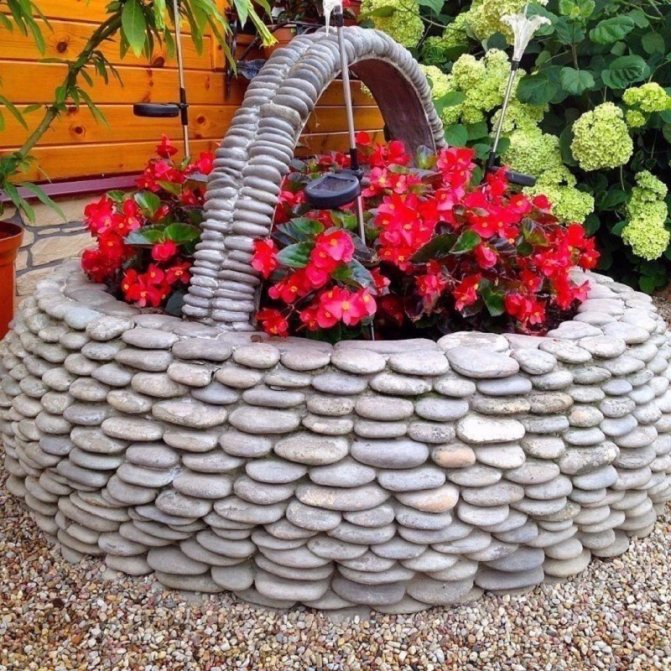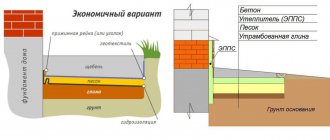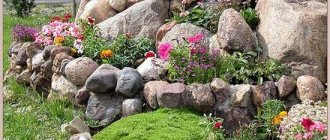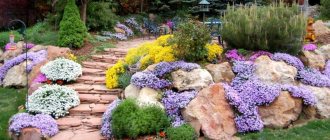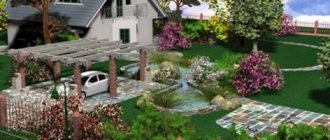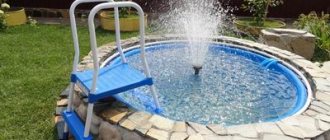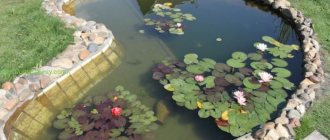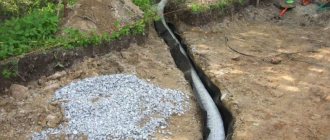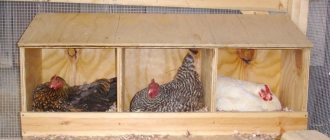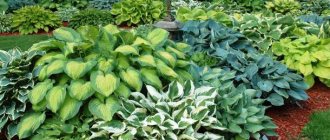You can decorate any site beautifully and inexpensively using a flower bed of stones. Recently, this pictorial element has become very popular, and it can be seen not only in private houses, but also in parks and alleys. And all due to the fact that the stones are ideal for creating and decorating an interesting flower bed. If you choose the right flowers for her, then it will be difficult to look away from such a composition.
A flower bed of stones can give your seat a uniquely beautiful look
How to make a flower bed of stones with your own hands: interesting ideas from various materials
The big advantage of stone and brick flower beds is their relative accessibility. Certain types of materials, as a rule, are of low cost, and most of the work can be done independently. And at the same time, a brick or stone flower bed will become a bright accent in the garden design, harmoniously fitting into any style.
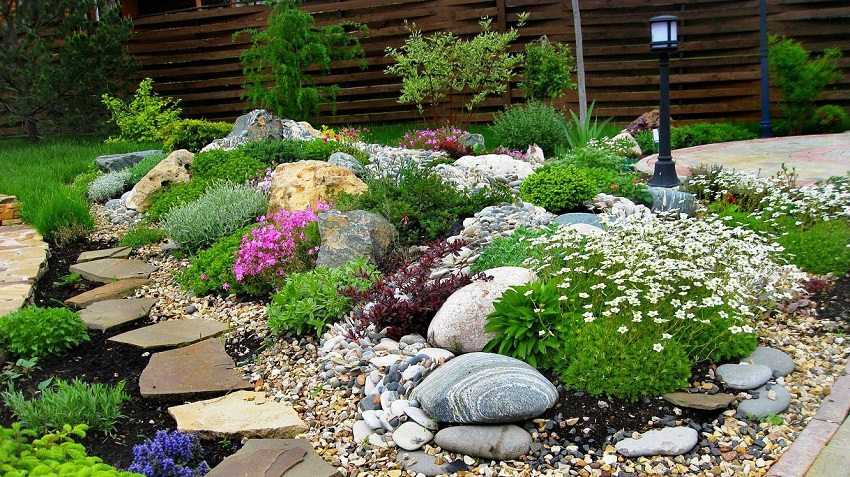
A variety of stones and plants will create a sense of genuine natural beauty in the yard.
Natural stone is durable, environmentally friendly, resistant to chemicals and extremely aesthetic. It is not afraid of temperature extremes, which opens up great possibilities for its use in garden design. However, its high cost is often a serious drawback.
Materials for decorating flower beds with stones
A wide variety of materials can be used for a flower bed:
- limestone;
- tuff;
- sandstone;
- slate;
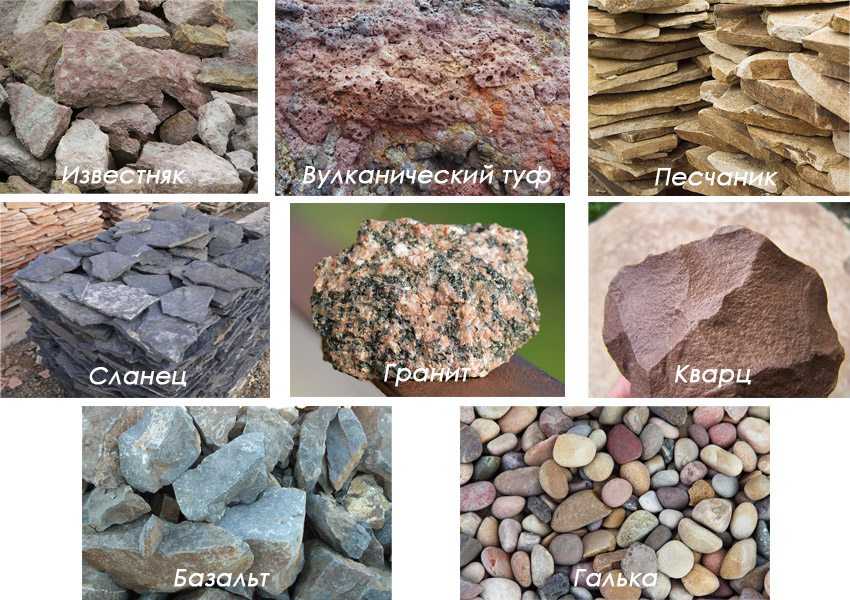

Types of stones that are used to create and decorate flower beds.
- granite;
- quartzite;
- basalt;
- pebbles.
Limestone has a pleasant natural color of light gray, white, yellowish cream, blue, pink shades, which allows you to create interesting garden compositions. Due to its porous structure, the material is not protected from the aggressive effects of water and wind, but the resulting cracks are often filled with soil and used for planting various plants (primarily ground cover and mosses).
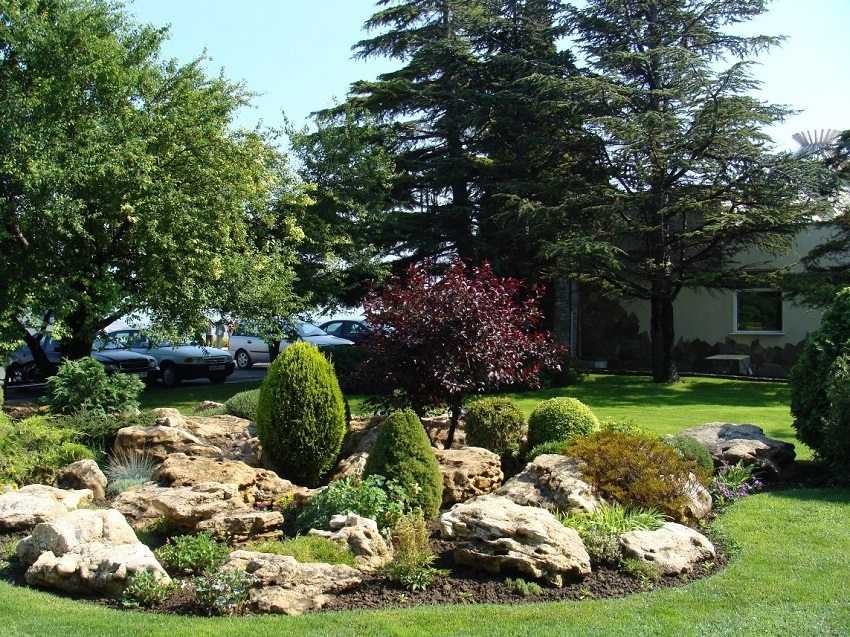

An interesting idea for a simple flower bed using volcanic tuff and conifers.
A huge number of shades (white, red, purple, pink, orange, gray, brown, black), high strength and, at the same time, surprising ease of processing is distinguished by volcanic tuff - one of the varieties of limestone. Most often it is used for artificial terraces or flower beds near water bodies.
The porous structure is also characteristic of sandstone. It allows air and moisture to pass through well, but rather quickly loses its original appearance and collapses. Nevertheless, it is widely used in garden design due to its wide variety of shades (from gray to reddish and sandy) and its beautiful structure. Rubble stones and boulders look especially impressive.
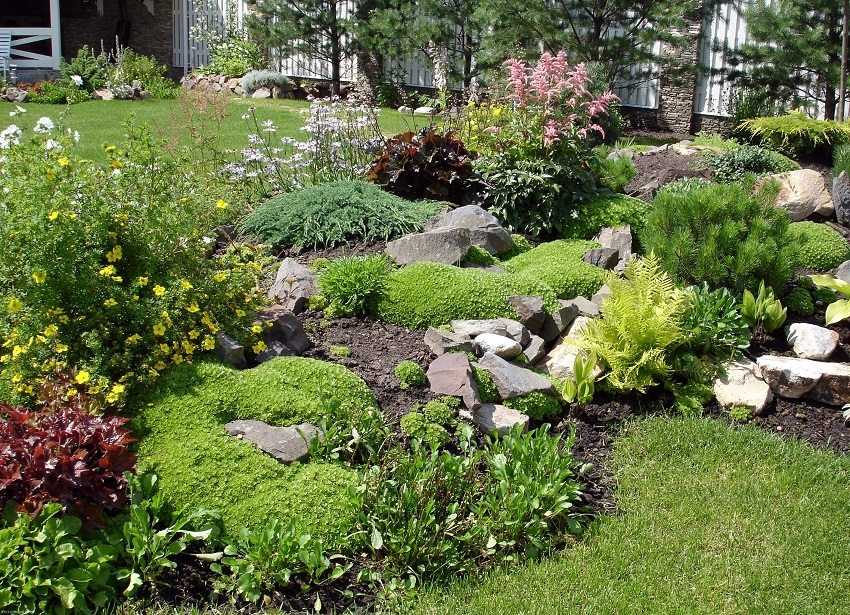

The stone bed fits perfectly into the natural landscape.
When decorating flower beds, slate is often used. A distinctive feature of this mineral is its peculiar layered structure and the property of being divided into separate plates. Fences for flower beds from it can last for decades, while maintaining their original appearance and characteristic shine. Despite its high cost, slate is extremely popular among landscape designers.It is very plastic, absolutely waterproof, not afraid of fungi, chemicals, or temperature extremes. As a rule, slate (especially lumps) is used to make raised flower beds.
Granite is not afraid of moisture or frost; it serves for decades and is distinguished by its amazing beauty. Its disadvantages include a very high cost and ability to oxidize the soil. The latter has to be taken into account when choosing plants, as a result, the scope of the stone is rather limited.
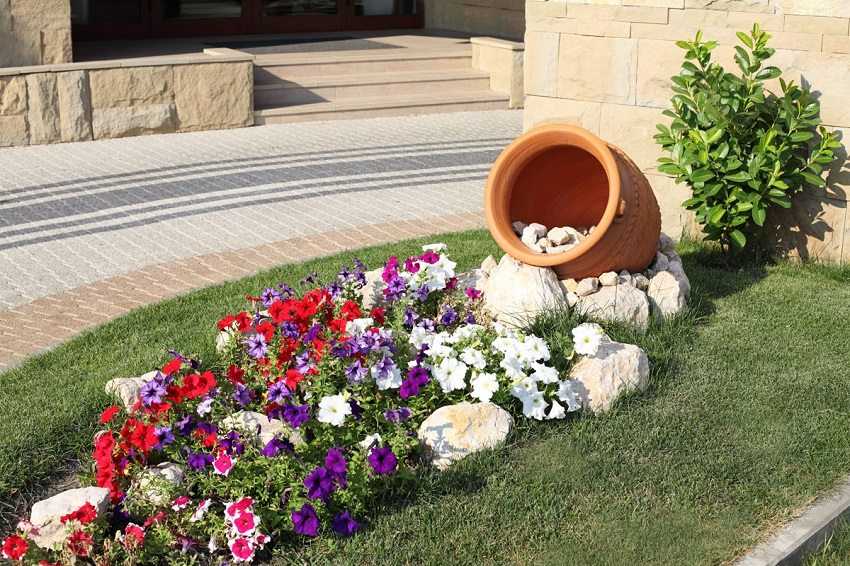

An unusual flower bed using a flowerpot.
Quartzite reflects light, because of this, its surface shines and shimmers in the sun. The rich palette allows the mineral to be widely used in landscape design. Durable basalt is often used to reinforce slopes and create artificial terraces.
Pebbles are widely used in garden decoration. A neat appearance, a large selection of shades and a low cost allow not only to protect the flower garden, but also to make it a real work of art. Most often, pebbles are used to create the outline of a flower bed. To impart strength to the structure, the material is usually laid out on a cement mortar.
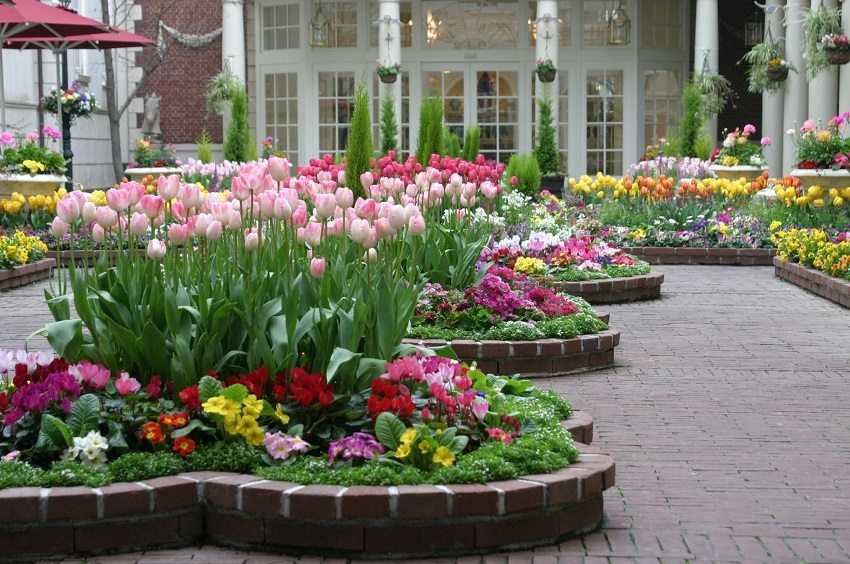

A beautiful flowerbed with tulips is framed with a brick border.
What kind of flower beds are there?
There are many types of stone beds. Photos on the Internet and specialized literature give a detailed description and interesting ideas regarding the arrangement of each of them, be it:
- ordinary flower bed;
- raised flower bed;
- gabion;
- rockery;
- alpine slide;
- terraced slope;
- Japanese rock garden;
- arabesque.
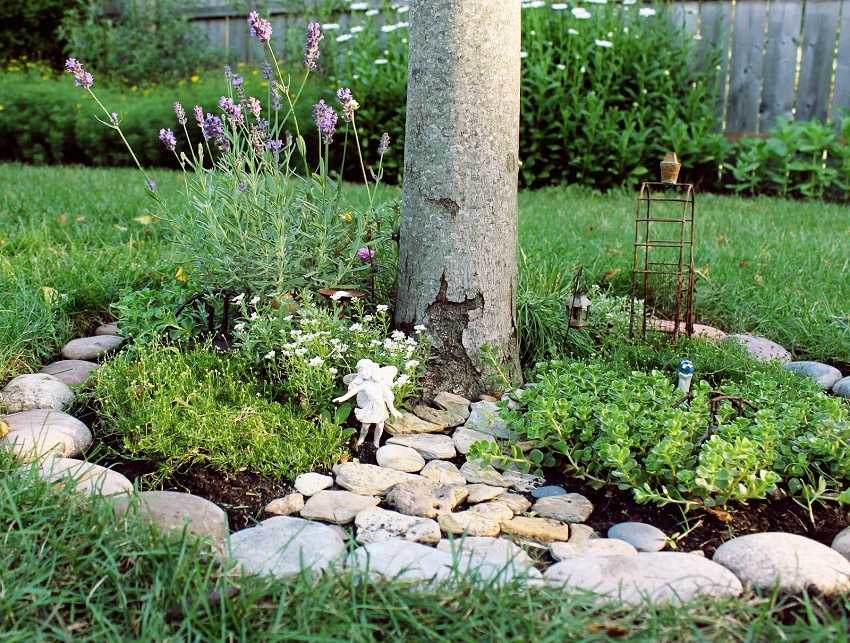

A rounded flower bed, beautifully framing the tree.
An ordinary flower bed is a small-sized piece of land fenced with a border, as a rule, of a clear geometric shape (round, square, rectangular, oval). The curb itself can be laid out of stones in one or more layers.
Flower beds and flower beds of perennials: (read more)
A raised flower bed is not only a bright and stylish accent in garden design, but also performs quite practical tasks. This design allows you to grow flowers in areas with poor soil, as well as significantly increase the usable area in small areas (especially for multi-tiered raised flower beds).
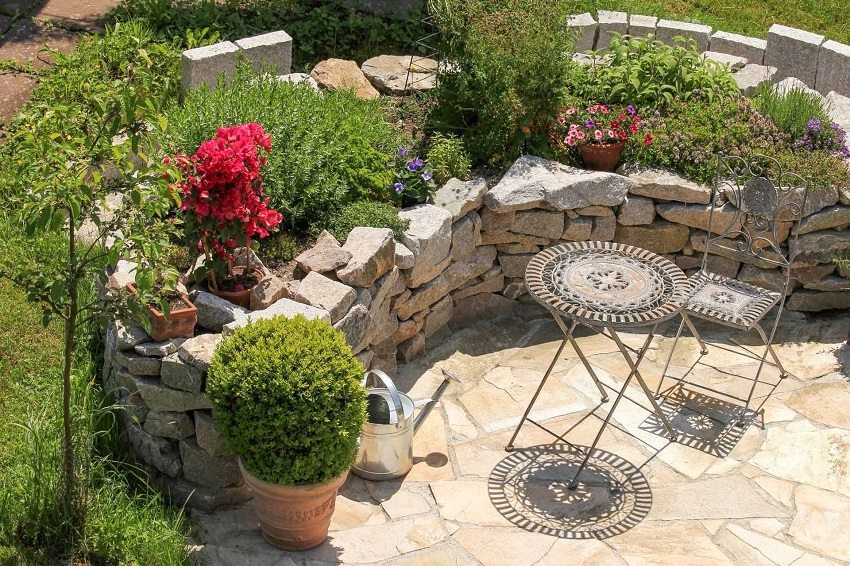

The raised flower bed can be used for zoning the resting place.
The raised bed is easier to care for because it is protected from weeds and many pests, and because of the height of the entire structure, there is no need to bend over to reach the plants. In a raised flower bed, it is easier to create suitable conditions for flowers and shrubs with specific soil requirements, for example, hydrangeas and conifers that grow exclusively on acidic soils.
Note! Such a flower bed has its drawbacks. It is a capital structure that requires financial costs and competent planning. The soil in it dries out faster, but this problem can be solved by installing a drip irrigation system.
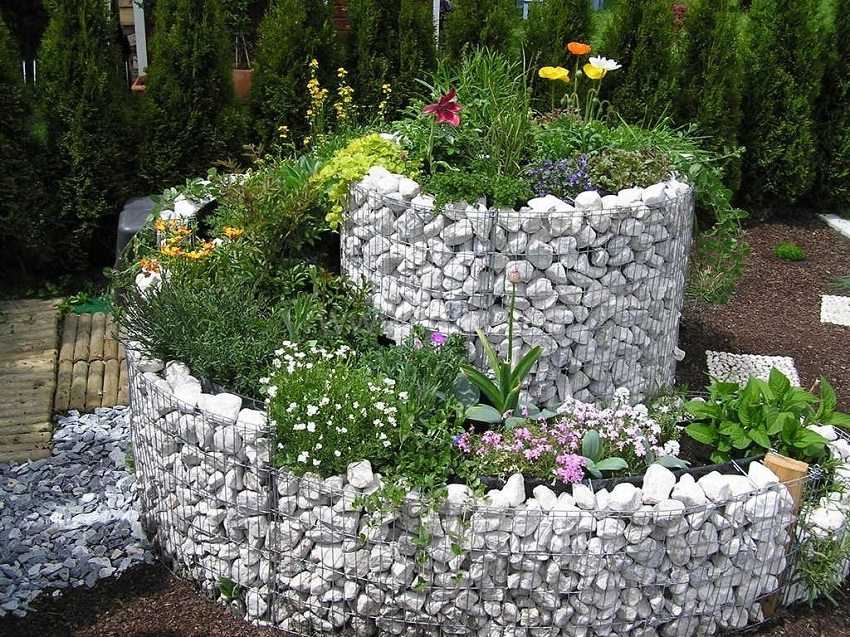

Gabion is constructed from a metal mesh filled with pebbles or rubble stone.
The original solution for the suburban area will be the installation of gabions - flower beds made of mesh and stones. This design feature allows you to give a flower bed any shape. Gabions are environmentally friendly, durable, provide excellent soil drainage and do not require a lot of money. With some experience, you can easily build them yourself.
Rockery, or rocky hill, is a group of large stones of different sizes, picturesquely scattered on a small area, but of the same breed (most often, slate or limestone). This is done to simulate a mountain meadow.Large stones for a flower bed are dug into the ground in the ground for greater stability, and small pebbles are scattered nearby. Against this background, undersized shrubs and creeping plants (heather, juniper, dwarf spruce, thuja, sedum, miscanthus) look ideal.
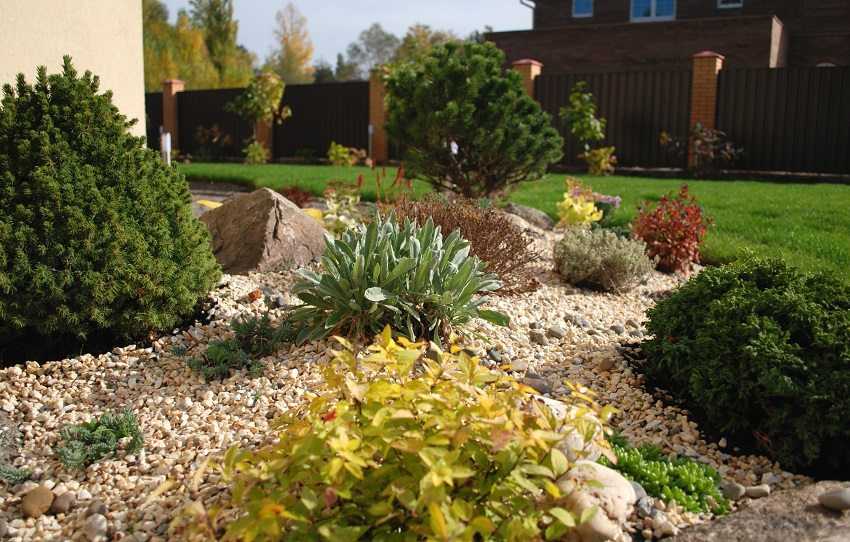

Gravel is often used as drainage for rockeries.
An alpine slide is often confused with rockeries. Rockery is located on a plane, and an alpine slide is a complex multi-stage structure, in the center of which a large boulder is usually installed, and around smaller stones, on which various mountain (or similar) plants with a well-developed root system are planted.
Alpine slide in the country: (read more)
A terraced slope is built from walls of various shapes and heights, made of crushed stone (quartz, granite, basalt), sometimes with the addition of sandstone or limestone.
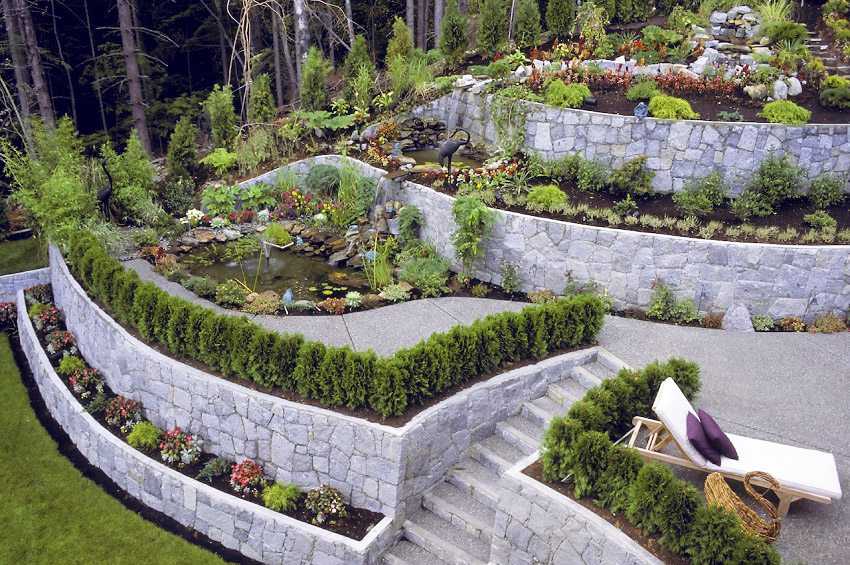

Terraced slope, consisting of various types of plantings.
The Japanese rock garden consists of rounded, often mossy boulders spaced apart from each other. Its peculiarity is the predominance of stones - boulders and pebbles. Plants are planted, but in very small numbers.
Arabesque is a regular flower garden of an unusual shape (in the form of an animal or an insect, more often a butterfly) with strict symmetrical plantings of low carpet plants.
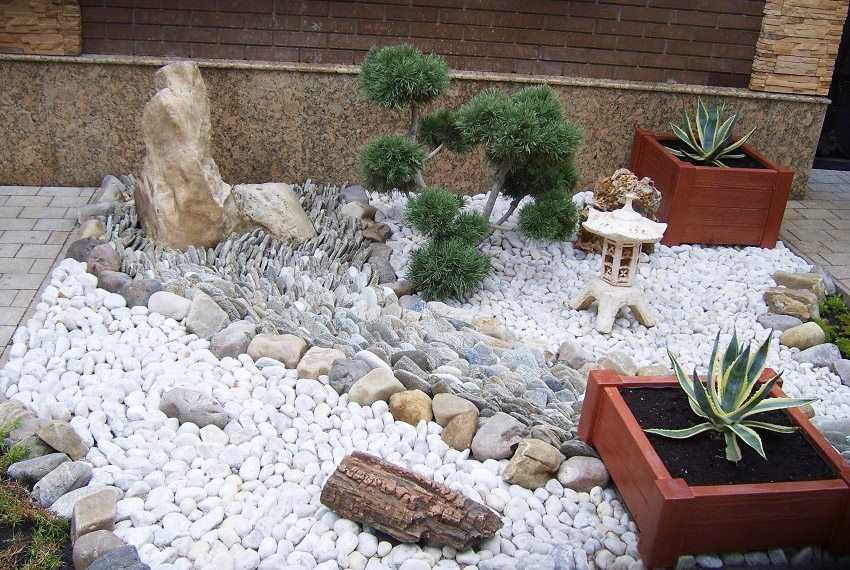

The Japanese garden looks austere and elegant thanks to the overwhelming majority of stones.
Fashionable stone garden
Creating a garden of stones is a rather time-consuming process. This is because it involves cutting the elements. Stone gardens come in all shapes and sizes. Proper surface preparation is essential. A stone garden is a flat area covered with pebbles or fine gravel. Instead of trees, stones are placed on it.
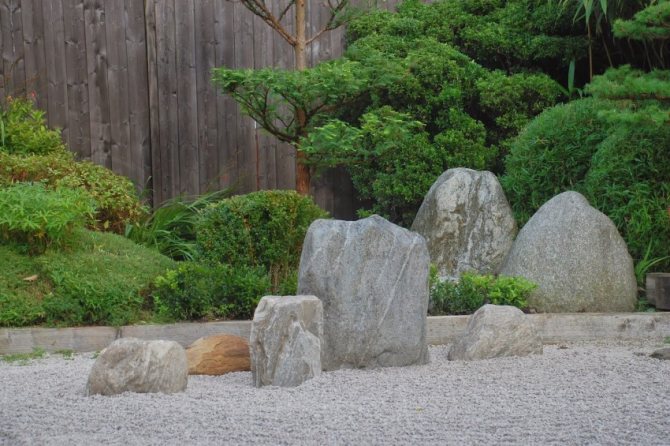

The seeming randomness of the placement of cobblestones and boulders should not deceive you. The entire stone ensemble obeys certain laws, which are based on Japanese philosophy.
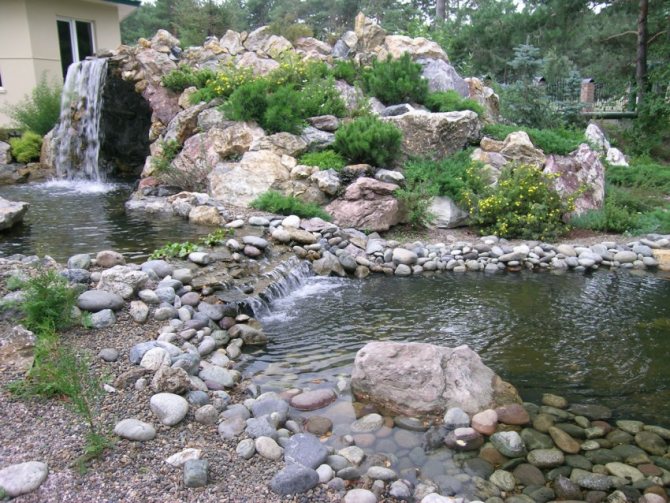

DIY stone flower bed: beautiful photo examples, interesting ideas and construction tips
First of all, it is necessary to take into account the degree of illumination, as well as the level of humidity. And, already based on this, choose not only plant varieties, but also the type of flower bed. For example, with a high groundwater level or regular stagnation of water on the site, it is worth abandoning ordinary flower beds and giving preference to raised flower beds or gabions.
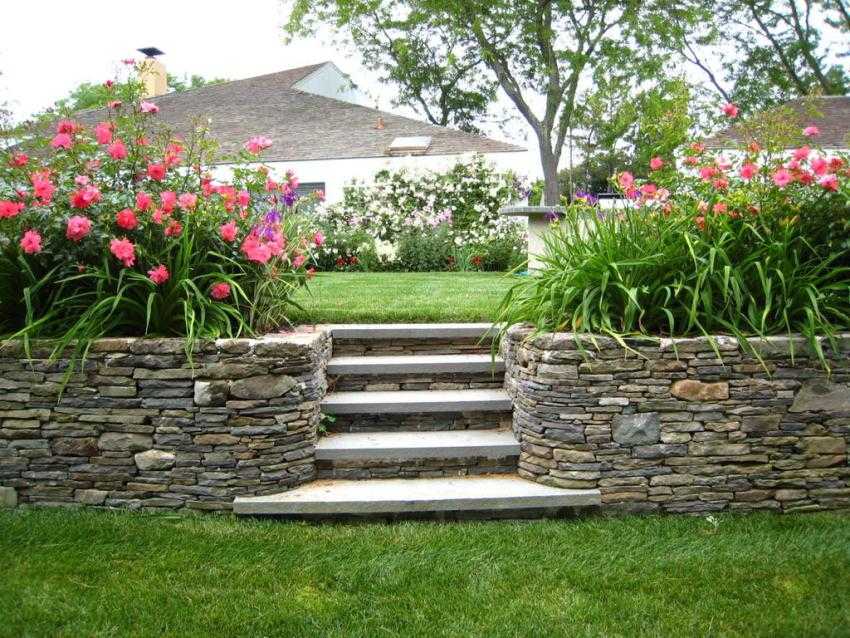

Two stone flower beds frame the garden steps.
The location of the flower bed is also important. Under no circumstances should the flower garden interfere with the free movement of the area or watering the plants. The type of flower bed also depends on this. So, gabions look best along the walls and near the fence. The Alpine slide is most appropriate to place on a small slope, like the arabesque, since the difference in height will allow you to clearly see the bizarre ornament. And in the middle of the garden it is worth placing a raised flower bed.
Note! Before starting all work, it is necessary to draw a sketch of the future flower garden, make markings on the site, calculate the required amount of materials, carefully remove the top layer of the earth and separate it from the lower layers.
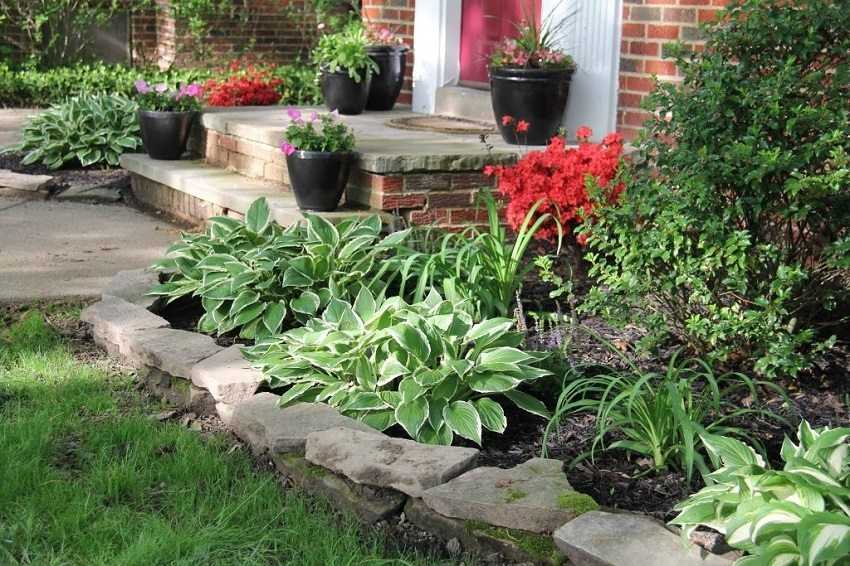

A small curb lined with stones separates the plantation area.
The simplest option is an ordinary flower bed with a border. To do this, they dig a trench around the perimeter of the flower bed, fill it with gravel and install larger stones on top, pressing them a little into the ground.
A foundation is required to create a raised flower bed. To do this, you need to dig a trench up to 25 cm deep, lay it out with cobblestone or pebbles and tamp it. With the help of cement mortar, the outer walls of the flower bed are laid out, while they must be placed with a slight inclination inward and very tightly to each other.The smoothest stones are laid out on top, and the cracks are filled with cement or small stones. At the end of all work, you can fill up the drainage layer, then the fertile soil, let it settle, and then plant the plants.
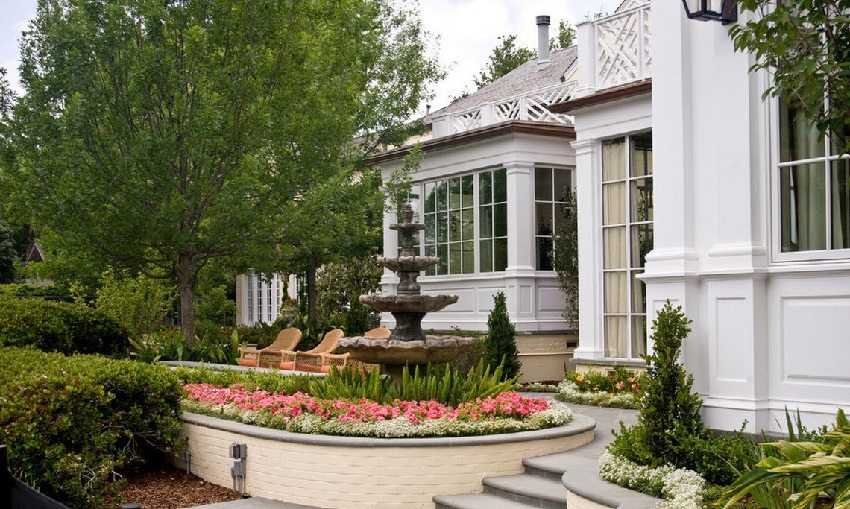

A flower bed, enclosed by a brick wall, will be a beautiful addition to the yard in a private house.
For rockeries, you can use a flat area, or you can make a small artificial slope. Particular attention should be paid to stones - both boulders and pebbles should go well with each other.
A rock garden also requires a slope. First, you need to remove the top fertile soil layer, tamp the soil, lay drainage and sprinkle it with fertile soil. The laying of stones should be carried out in the fall, so that precipitation and bad weather will let them sink. So the alpine slide will acquire the most natural look. It is important to leave earthen pockets at the joints of the stones, into which the plants will later be planted.
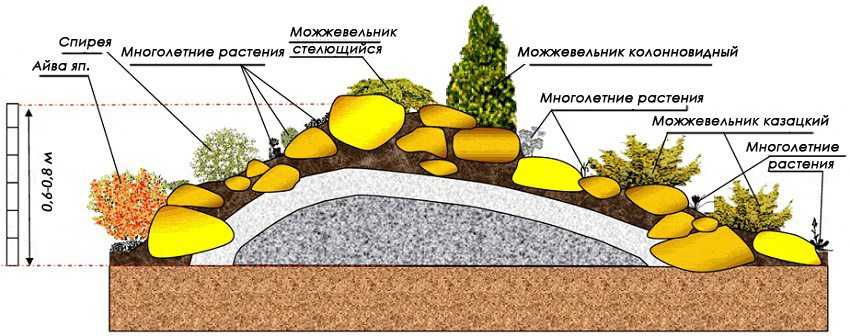

Alpine slide device diagram.
Gabions can be installed independently. The simplest option is a square or rectangular gabion, for which you can use ready-made canvases made of anti-corrosion wire mesh.
Basic rules for registration
When creating a flower garden, you can use different materials. It is best to place it along a blank wall or in the center of the site. The place should be chosen so that the flower arrangement does not interfere with the owner of the site.
Vegetation for the flower bed should be chosen that has similar growing conditions. For example, if the flower garden is in the sun, then light-loving plants should be planted in it, which get along well with each other and complement each other.
If there is not much free space on the site, then a stone flower bed is best placed along the fence. In this case, it will not take up much space and will decorate the free space. To create a holistic composition, it is best to make one large flower garden than several small ones.
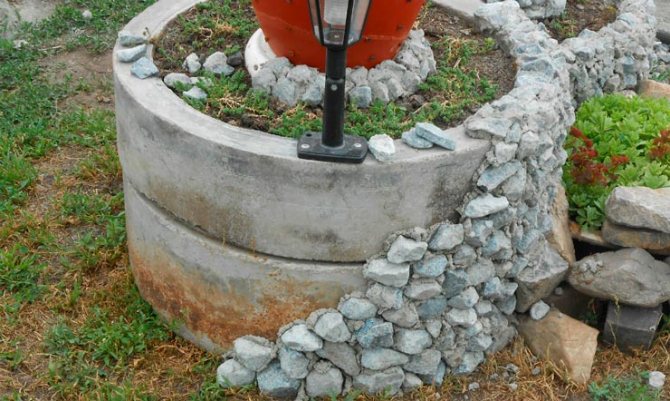

When creating a flower garden, you should use different stones so that the color palette is varied.
If several materials are used at once when creating a flower bed, then they should be combined with each other in texture and color. Therefore, it is best not to use several different minerals with bright colors in one flower garden. To create borders, stones must be selected the same size and shape.
It is interesting: borders for flower beds.
In an open area, oval, round or curly flower beds look good, but rectangular compositions should be made along the fence. Do not use too many decorative stones for the flower bed, so that they do not shift the main focus.
In this video, you will learn how to properly arrange a flower bed made of stone:
Brick beds: beautiful photo examples, interesting ideas and construction tips
Despite their simplicity and unpretentiousness, brick beds have undoubted advantages. Such flower beds do not require serious costs, since for their laying you can use the material left over from the repair or construction of a country house or farm buildings. In this case, this is even an advantage, the house and the flower garden made of the same material will look harmonious on the site. Moreover, even fragments of bricks or what remained after the demolition of the building can be used for flower beds.
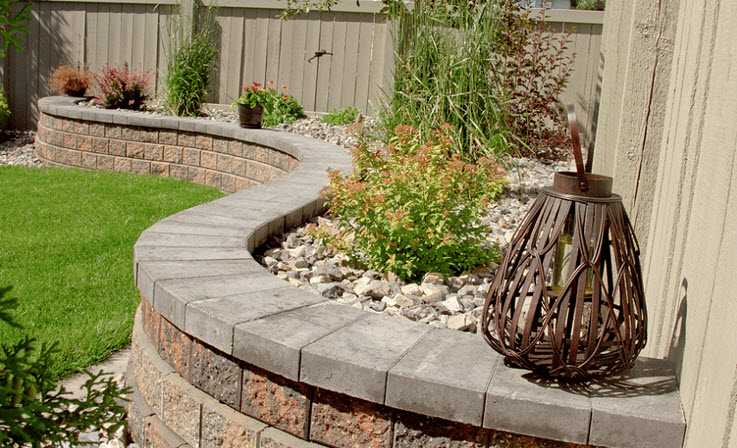

A wave-like stone structure with green spaces.
Even an inexperienced builder can work on such a flower bed, because only brick, sand, gravel (or crushed stone), cement mortar, twine and a couple of pegs are needed. As in the construction of a flower bed made of stone, you must first choose a suitable place, draw a sketch, mark the site, remove fertile soil and dig a shallow trench.
The trench is filled with sand, compacted, then a layer of gravel or crushed stone (it will also serve as drainage). It is also well tamped. After that comes a layer of bricks.
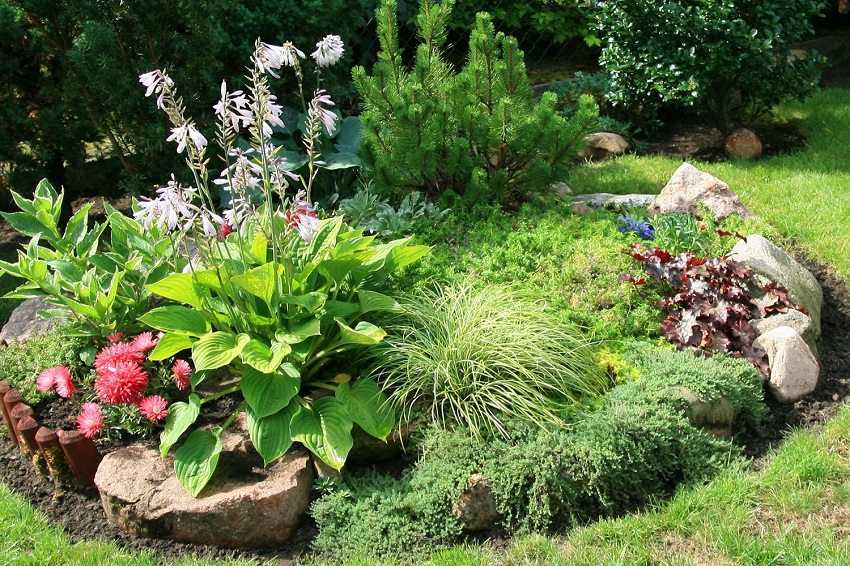

An ordinary flower bed with stones and several types of plants.
Note! You do not need to cement the first two rows of bricks. This will ensure a normal flow of water and protect the plants from root rot.
There is also another way to make a flower bed of stones. Instead of a sand cushion, the bottom of the trench along the perimeter of the flower garden is filled with a 5 cm layer of concrete. After its hardening, bricks are laid with the help of cement mortar, and the first layer of bricks is laid below ground level, and in the lower layer, also bonded with mortar, gaps are left for water drainage. It is necessary to check the accuracy of the masonry with a level. The walls of the flower bed, as in the case of a stone, are recommended to be slightly tilted inward. After laying the walls of the flower bed, it is left for several days so that the solution grabs.
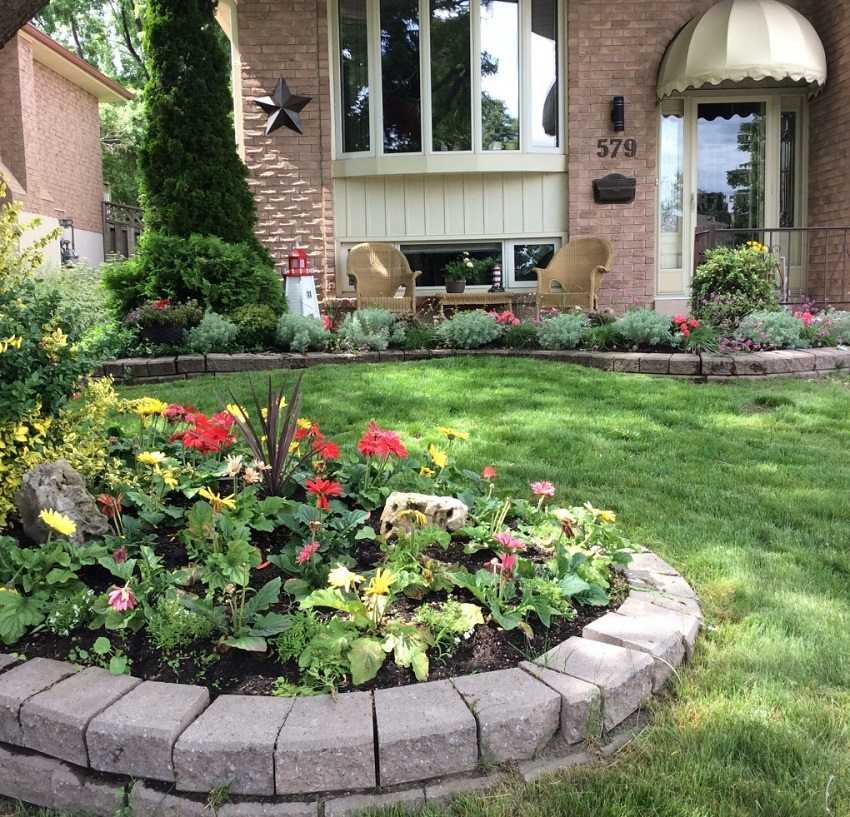

A flowerbed with a brick border adorns the courtyard.
Do not rush to plant flowers immediately after laying the ground. The earth must be shed and left for 10 days so that it settles well. And only after that you can start planting plants.
These simple tips on how to make a flower bed of stones will not only allow you to easily decorate a summer cottage, but also create optimal conditions for healthy and full-fledged growth of flowers and green spaces for many years

